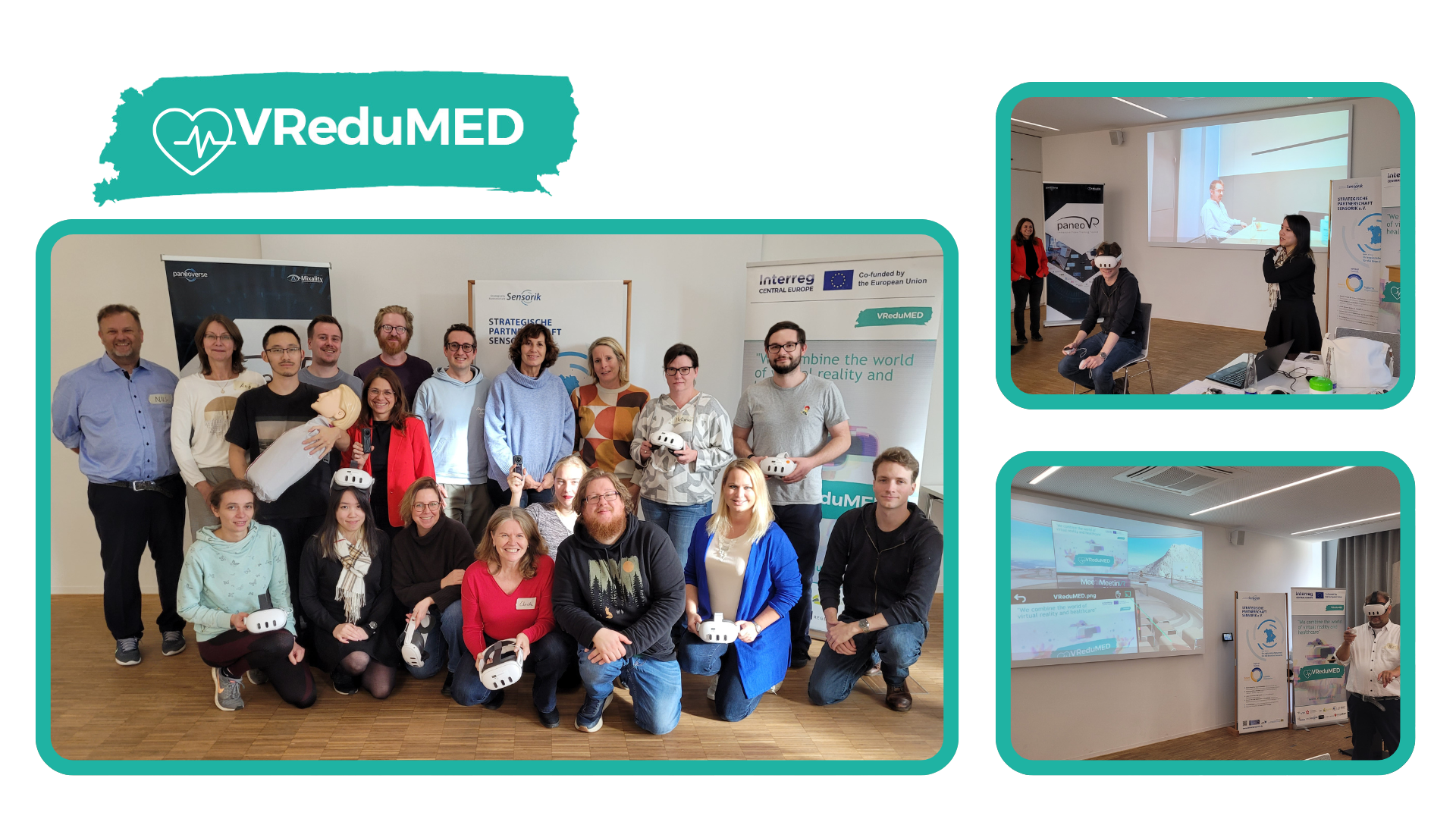For two days, an interdisciplinary and international group of nursing professionals, nursing students, and mentors from media informatics joined forces to explore how Virtual Reality can transform healthcare education. Their mission: to create their own VR learning scenarios based on 360° videos – without needing any prior programming experience.
A Virtual Start with Real Impact
The event began with a live connection to VReduMED’s partner VR labs in Hungary and the Czech Republic. Participants were introduced to the project’s existing training applications, CPR and Room of Horror, and met virtually using MeetinVR, a platform that makes collaboration in virtual space both intuitive and engaging.
A keynote session offered fresh insights into the latest research on VR in education, a practical overview of authoring tools, and valuable tips for 360° video production and storytelling. Participants also explored the software solutions 3Spin and PaneoVR – tools designed to make VR creation accessible to non-programmers.
Hands-on Creation: From Idea to Immersive Experience
After the theoretical introduction, the real creative work began. Participants formed interdisciplinary teams, selected a relevant care scenario, developed detailed storyboards, and transformed real environments into filming sets. Using 360° cameras, they recorded their scenes and brought them to life in PaneoVR, building interactive learning applications from scratch.
By the end of the second day, three fully functional VR scenarios had been created:
Blood Pressure Measurement: A realistic home care situation where a nurse instructs a family member and learners identify and correct typical mistakes.
Hand Disinfection: Multiple everyday situations in which learners must recognize and evaluate proper hygiene practices.
Acute Pain Management: A hospital setting that challenges learners to assess a patient’s sudden abdominal pain and choose appropriate interventions.
Collaboration as the Key to Innovation
The hackathon proved how powerful collaboration between care professionals and technologists can be. Once familiar with PaneoVR, participants were able to design interactive scenarios that not only replicate real-world situations but also enhance clinical reasoning and decision-making.
event’s biggest takeaway: strong teamwork and good preparation are essential. Developing a meaningful learning scenario requires thoughtful planning, clear educational goals, and careful attention to video quality and storytelling.
Empowering the Future of Nursing Education
The VReduMED Hackathon demonstrated that Virtual Reality is more than just a technological trend – it’s a bridge between theory and practice, helping learners experience care situations safely and interactively. The three resulting applications now serve as valuable examples for integrating immersive learning into nursing curricula.
By connecting care expertise with creative technology, VReduMED continues to shape the future of healthcare education – one virtual experience at a time.
